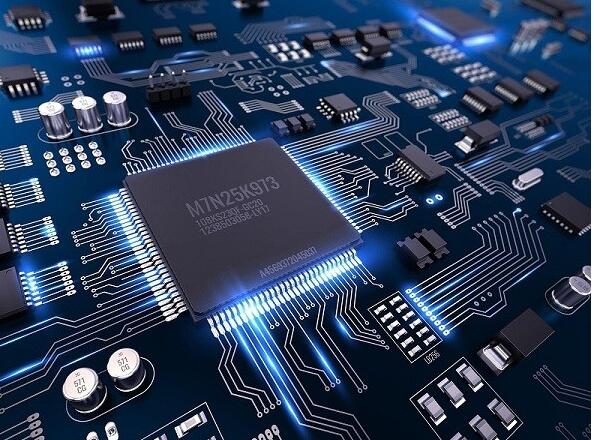PCB suppression of interference sources
Suppressing the interference source is to reduce the du/dt and di/dt of the interference source as much as possible. This is the best consideration and the most important principle in anti-jamming design, and it often has the effect of getting twice the result with half the effort. Reducing the du/dt of the interference source is mainly achieved by connecting capacitors in parallel at both ends of the interference source. Reducing the di/dt of the interference source is achieved by connecting inductance or resistance in series with the interference source loop and adding a freewheeling diode.
Common measures to suppress interference sources are as follows:
(1) The relay coil adds a freewheeling diode to eliminate the interference of back electromotive force generated when the coil is disconnected. Only adding a freewheeling diode will lag the off time of the relay. After adding a Zener diode, the relay can operate more times per unit time.
(2) Connect a spark suppression circuit in parallel at both ends of the relay contact (usually an RC series circuit, the resistance is generally selected from a few K to tens of K, and the capacitor is 0.01uF) to reduce the impact of electric sparks.
(3) Add a filter circuit to the motor, and pay attention to the shortest possible capacitor and inductance leads.
(4) Each IC on the circuit board should be connected with a 0.01μF~0.1μF high frequency capacitor in parallel to reduce the IC's influence on the power supply. Pay attention to the wiring of high-frequency capacitors. The wiring should be close to the power supply terminal and as short as possible. Otherwise, the equivalent series resistance of the capacitor will be increased, which will affect the filtering effect.
(5) Avoid 90-degree fold lines when wiring to reduce high-frequency noise emission.

(6) The two ends of the thyristor are connected in parallel with an RC suppression circuit to reduce the noise generated by the thyristor (this noise may break down the thyristor).
2 According to the propagation path of interference, it can be divided into two types: conducted interference and radiated interference.
The so-called conducted interference refers to the interference that propagates to sensitive devices through wires. The frequency bands of high-frequency interference noise and useful signals are different. You can cut off the propagation of high-frequency interference noise by adding a filter on the wire, and sometimes you can add an isolation optocoupler to solve it. Power noise is the most harmful, so pay special attention to handling. The so-called radiated interference refers to the interference that propagates to sensitive devices through space radiation. The general solution is to increase the distance between the interference source and the sensitive device, isolate them with a ground wire and add a shield to the sensitive device.
Common measures to cut off the interference propagation path are as follows:
(1) Fully consider the impact of the power supply on the microcontroller. If the power supply is done well, the anti-interference of the whole circuit will be solved more than half. Many single-chip microcomputers are very sensitive to power supply noise, so a filter circuit or voltage regulator should be added to the power supply of the single-chip microcomputer to reduce the interference of power supply noise to the single-chip microcomputer. For example, magnetic beads and capacitors can be used to form a π-shaped filter circuit. Of course, 100Ω resistors can be used instead of magnetic beads when the requirements are not high.
(2) If the I/O port of the single-chip microcomputer is used to control noise devices such as motors, isolation should be added between the I/O port and the noise source (add a π-shaped filter circuit). To control noise components such as motors, isolation should be added between the I/O port and the noise source (add a π-shaped filter circuit).
(3) Pay attention to the crystal oscillator wiring. The crystal oscillator is as close to the pins of the microcontroller as possible, the clock area is isolated with a ground wire, and the crystal oscillator shell is grounded and fixed. This measure can solve many difficult problems.
(4) Reasonable division of the circuit board, such as strong and weak signals, digital and analog signals. Keep interference sources (such as motors, relays) away from sensitive components (such as single-chip microcomputers) as far as possible.
(5) Separate the digital area from the analog area with a ground wire, separate the digital ground from the analog ground, and finally connect it to the power ground at one point. The wiring of A/D and D/A chips is also based on this principle. Manufacturers have considered this requirement when assigning A/D and D/A chip pin arrangements.
(6) The ground wires of the single-chip microcomputer and high-power devices should be grounded separately to reduce mutual interference. Place high-power devices on the edge of the circuit board as much as possible.
(7) The use of anti-interference components such as magnetic beads, magnetic rings, power filters, and shields in key places such as the MCU I/O port, power cord, and circuit board connection line can significantly improve the anti-interference performance of the circuit.